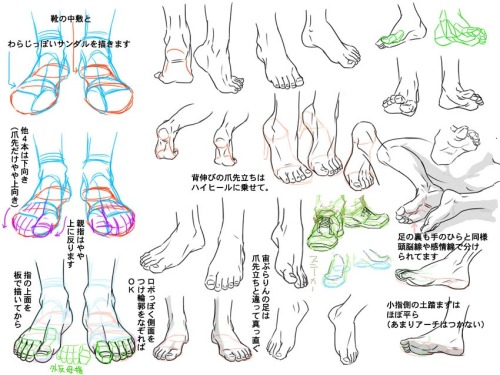Tuesday, November 25, 2014
Saturday, November 22, 2014
Of Struggle and Doubt [feedly]
----
Of Struggle and Doubt
// Muddy Colors
David Palumbo
We often talk about the difficulty in creating art. The careful attention to concept, craft, and all the little things that have to come together to make strong work. We talk about how these challenges do not go away over time, that the life of an artist is (hopefully) one of constant growth and evolution. Every so often, however, a good or even great piece might just… happen. Like, almost on its own. No stressing, no careful finessing, just smooth easy flow. It is what we always want and, when we get it, will never trust. It is a complicated feeling.
A year or two back I was talking with a friend who also happens to be one of my favorite living painters. At some point we got on to talking about those odd moments when a sketch or painting just seems to tumble effortlessly onto the page and the subsequent distrust of these images. He specifically mentioned a piece which, despite drawing praise from others, he felt conflicted over including in his web site because "it just felt too easy." Does that sound familiar?
Though I don't imagine all artists feel this way, I suspect this is a feeling artists of all disciplines and skill levels will recognize. I know for sure that I feel it and I always try to keep it in check but it usually gets the better of me and has caused me to under price, not show, or otherwise neglect certain paintings. When I have shared them, it was with a sort of embarrassment because I felt like I just got lucky. I didn't actually earn that one.
The funny thing is at the same time I also feel that, in other people, those pieces which jump right out of an artist can often be their more genuine and interesting works. In other people, those are the moments when the creative lightning is just flowing through them without second guessing, and that is cool to see. So why do we, when it comes to our own efforts, feel it is only legitimate if we beat our head on a wall, even just a little bit, before seeing a satisfactory result emerge?
One possible answer is that most artists have a talent for magnifying the faults in their own work which is sort of how we ever get to actually be any good. When it happens so fast, it is only natural to suspect that we have somehow missed something, let some critical mistake slip through. Then, when not finding one, we dismiss the good qualities in the work as a fluke. We're embarrassed to stand behind the work because we worry that someone might … might what?
I think for me, it is a worry that it will look like I didn't care. There is probably some critical flaw in the design or the concept is hollow and I didn't bother working harder to improve it. This is firmly attached to the concern over what other people might think. If it seems that we are not trying, not locked in endless battle with our demons (or at least our medium), will it diminish the result? Strangely, while I can feel this in my own work, I will watch other artists and admire how gracefully and apparently without struggle they produce incredible images. If fact, I prefer work which flows over that which appears labored. When artists talk with admiration of others, it often might touch on this idea that their paintings seem effortless.
Another frustration in this is that I don't enjoy the difficult parts. I don't want to struggle, but am suspicious when it is absent. Don't misunderstand this to be an essay on how painting is actually really easy but we have to pretend that it isn't. Most of the work which I'm really proud of was certainly difficult in one aspect or another and some were painful from start to finish. Seeing those through to the other side brings with it a degree of satisfaction. In some way, I'm sure that I learned from those how bearing the discomfort is worth it in the end and so I am suspicious when the struggle never quite materialized.
I think this can lead to a danger as well, which is the habit which some people have (not just in their art but in their lives) of adding unnecessary difficulties. Besides under-valuing results which came easy, we might over-value work which took a great effort and so some will place unnecessary obstacles in their own path. Again, this is easy to see in others and not so easy to find in ourselves.
Of course, as mentioned in the beginning, an artist seeks growth and struggle is an inevitable step towards growth. I'd like to think that, so long as the struggle in the work is about pushing ourselves to better achieve our intentions and discover something more personal and unexpected rather than just for its own sake, the struggle is healthy. Perhaps, in the end, that is what sits at the root of any embarrassment towards those occasional easy wins. That fear in the back of our thoughts that, if we allow ourselves to be satisfied with the ones that come easy, we might stop working towards that ever elusive next level.
Maybe it is best to always invite the struggle of growth, to always make room for the discomfort of self-improvement, but to also accept those moments of easy success as a reward and a sign that we are indeed moving forward just a little bit further each time.
----
Shared via my feedly reader
Sent from my iPad
Tuesday, November 18, 2014
Tweet from Winsor and Newton (@winsorandnewton)
 | Winsor and Newton (@winsorandnewton) |
Art quote of the week: 'My job is to draw what I see, not what I know' - Turner #Artquote pic.twitter.com/xR9FC7eZaI | |
Download the official Twitter app here
Saturday, November 8, 2014
do you have any tips on drawing hair? [feedly]
----
do you have any tips on drawing hair?
// Art and Reference point
tutorial time! i'm very late finishing this but.. tutorial time! okay so I like to draw characters' hairs beginning with a cowlick. in case you've never heard of a cowlick, it's basically a tiny spot where the hair will grow away from. and they show up in random places on the crown of your head, either on top the forehead or somewhere in the back. you could even have two cowlicks! coughs anyway
so make the cowlick your starting point! pick it anywhere on the head, and draw outward

this also means that any hairline they have will stem off from the cowlick too, but.. eh I'm not really big on drawing hairlines. they're just not wild enough for me
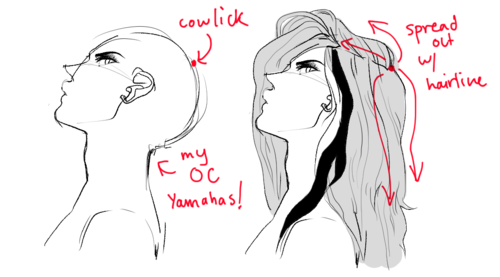

and hairlines! Everyone has some sort of hairline in front of their face! I drew some general hairline shapes, and again they vary amongst everyone

i'll do wavy and curly hair!

wavy hair's a little tough. with wavy hair, I would still consider starting from a cowlick, and drawing out from that point. wavy hair is very fluid and always has good balance in between each wave
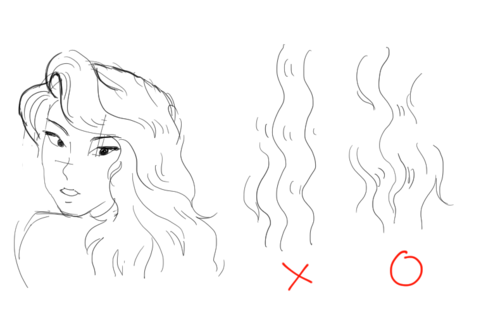
it normally doesn't follow a pattern, but instead follows the direction other strands are going. try not to draw every single strand or group too many strands going in the same direction. just use portions of strands, spacing them out to your preference and paying attention to flow. doing this will make it appear very smoothy smooth and.. fluid!

NOW FOR REALLY CURLY HAIR! curly hair is so voluminous, so thick, and so alive! curly hair is so curly that.. there isn't any clear cowlick to start drawing from! it goes in all sorts of directions and has very wild WILD strands. since curly hair's so thick it holds up its own shape, so start out with the basic outline around the head, and from here uh?? i don't know I just improvise some whacky lines. i find it easier to draw whacky lines continuously over one area, or even all over. the more lines drawn together the more accentuated the thickness is
i think that's about it? anyway I hope this helps! good luck and fight-o!
----
Shared via my feedly reader
Sent from my iPad
sutured-infection: From William Cheselden’s Osteographia, 1733 [feedly]
----
sutured-infection: From William Cheselden's Osteographia, 1733
// Art and Reference point
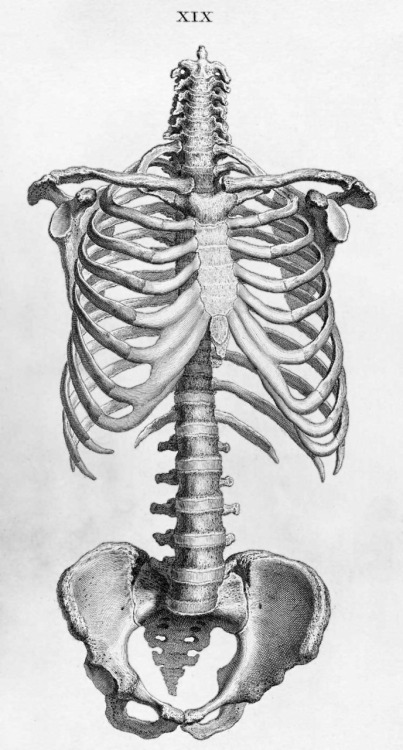
From William Cheselden's Osteographia, 1733
----
Shared via my feedly reader
Sent from my iPad
Wednesday, November 5, 2014
Tweet from (~'3' )~ (@rawrgyle)
 | (~'3' )~ (@rawrgyle) |
chubbing at the speed of light pic.twitter.com/o428tOdoIa | |
Download the official Twitter app here
Sunday, November 2, 2014
meanassmoses: Scanned from something, can’t recall the title.... [feedly]
----
meanassmoses: Scanned from something, can't recall the title....
// Art and Reference point
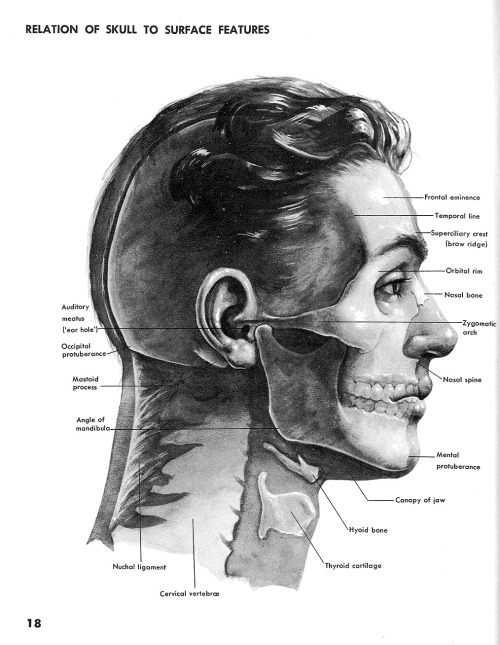

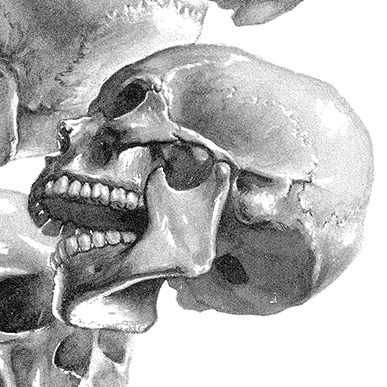

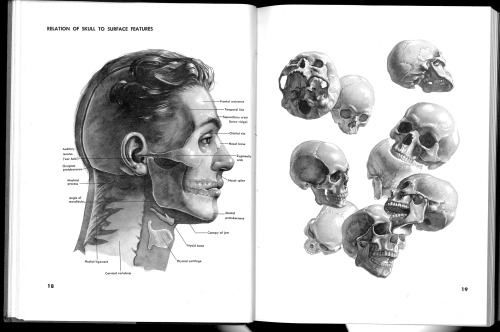
Scanned from something, can't recall the title. Wish I knew. Getcher enormous .tiff here.
----
Shared via my feedly reader
Sent from my iPad
Drawing Basics: Mixed Bag of Anatomy Inspiration [feedly]
----
Drawing Basics: Mixed Bag of Anatomy Inspiration
// The Drawing Blog
Peter Kelsey's cast drawing of the male torso. Hey fellow artists! Drawing anatomy seems overwhelming to me sometimes, but if I focus on strategies for HOW to learn it, it starts to seem doable. Here are a few tips I learned from a recent article...(read more)
----
Shared via my feedly reader
Sent from my iPad
Rembrandt: The Late Works at the National Gallery, London [feedly]
----
Rembrandt: The Late Works at the National Gallery, London
// lines and colors

Rembrandt: The Late Works is a landmark exhibition of paintings, drawings and etchings of the 17th century Dutch master on view at the National Gallery, London, until 18 January 2015.
There are some great works in the exhibition, including the two remarkable self-portraits I recently highlighted here and here, along with other masterpieces.
Among the prints and drawings the deceptively simply drawing of a woman sleeping (above, bottom, with detail) which — in its blend of European and Asian sensibilities, keen draftsmanship and calligraphic brushwork, simplicity and elegance — I have long thought to be one of the most beautiful drawings in the history of art.
The National Gallery website has a short feature about the exhibition, but not much in the way of associated image galleries. I've tried to provide resources below for the images I've featured here.
----
Shared via my feedly reader
Sent from my iPad
Saturday, November 1, 2014
Lessons From a Bizarre Master [feedly]
----
Lessons From a Bizarre Master
// Artist's Network
The fall issue of Drawing brings to our attention an overlooked artist from the Baroque era: Giovanni Battista Bracelli. Bracelli's greatest achievement was a series of etchings called "Bizzarie di Varie Figure," in which figures are inventively constructed out of geometrical forms, objects, and materials.
In the article, John A. Parks tells the story of Bracelli's career (or what little is known of it) and breaks down the strategies he uses in these etchings. The Bizzarie suite contains more drawings than we were able to fit in the magazine article, so here we're happy to present an extended selection of plates from this series, accompanied by an excerpt from John's article. To read the entire piece, get your copy of fall 2014 Drawing, or subscribe to the magazine here.
~~~
Learning From Giovanni Battista Bracelli
by John A. Parks, excerpted from "Bizarre Geometry: The Etchings of Giovanni Battista Bracelli"
Bracelli's unique prints are not only amusing but also tremendously informative for artists working with the human figure. The following four observations are just a few of the lessons we can learn from his work.
1) Making Equivalent Forms: Many of the figures in the Bizzarie are constructed with alternative forms: boxes, rings, helixes, et cetera. Making figures in this way can help you to think about and conceptualize the various volumes throughout the body without undergoing the onerous task of rendering the surface.

Plate No. 8, by Giovanni Battista Bracelli, 1624, etching. From "Bizzarie di Varie Figure." All artwork this article collection National Gallery of Art, Washington, DC.
2) The Importance of Gesture: All of the figures in Bizzarie display clearly readable gestures. These are sometimes exaggerated and occasionally outlandish but always eminently recognizable. The idea that a great deal of our social information is transmitted through gesture is central to much figure work and was particularly important in the 17th century, when classical artists such as Poussin sought to illustrate events in myth and history. All too often art students spend countless hours learning to render form and construct accurate proportion without paying enough attention to how the figure might read in a narrative context.
3) The Power of the Imagination: Bracelli's figures are unforgettable because they make surprising and imaginative connections. A figure is built out of unexpected components. A ring becomes a foot, a box frame becomes a head. The artist was unafraid to let his imagination roam even when it sometimes left the tracks. Trying something new and getting into unknown territory is always risky. Bracelli went ahead.
4) Humor and Whimsy: Humor is difficult to carry off in large-scale works of painting or sculpture because jokes tend to wear thin quickly. But in small-scale graphic works, such as the Bizzarie etchings, a sense of whimsy and delight allows for a gentle humor. The viewer is borne along by the joy of invention that the artist displays.
~~~
To see more of Bracelli's work and to read the entire article, get your copy of fall 2014 Drawing, or subscribe to the magazine.
The post Lessons From a Bizarre Master appeared first on Artist's Network.
----
Shared via my feedly reader
im having a hard time thinking of poses to draw????? cn you help maybe>???????/ [feedly]
----
im having a hard time thinking of poses to draw????? cn you help maybe>???????/
// Art and Reference point
UMM for me it's easier to come up with poses if I think of my character as doing an ACTION not a pose idk if that makes sense?
So instead of thinking of a fixed pose, I think of an action that my char could be doing e.g eating a piece of pie
it's easier for me to visualize a pose if there's some context YEAH
ALSO I like to draw sequences? of a certain action, and then pick the one I like best e.g. if my OC is reading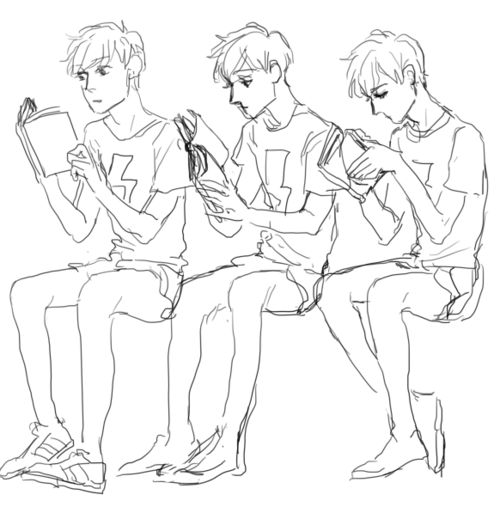
1) Standard pose > 2 & 3 poses that might follow after if this is moving
or if they're frying an egg
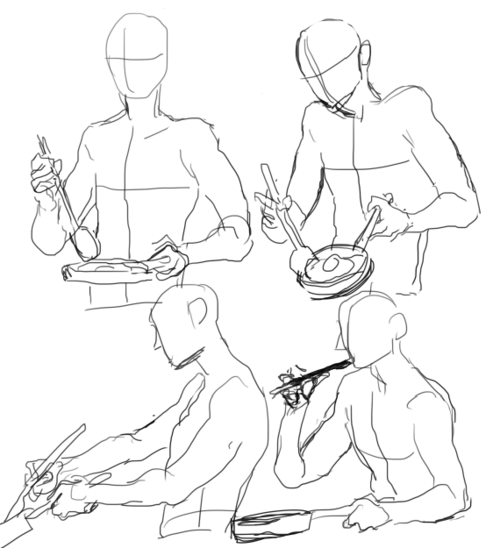
I don't draw it out in full all the time ofc, sometimes I just draw like really sketchy sequences yeah idk if that makes sense, but it helps me figure out poses besides the most obvious one!
WHEN YOU DON"T KNOW where to put the hands always go back to WHAT WOULD YOU DO if you're doing this particular action?? And if all things fail, you can always go to sites like pixelovely for poses
----
Shared via my feedly reader




